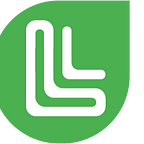Under The Hood At Lucid Lane: Multi-Modal Communication To Best Meet Patients In Their Comfort Zone
When it’s time to see a medical professional — doctor, therapist, even a dentist — the process is usually the same, unless it’s an emergency. You head to the office, check in at the front desk, and sit in the waiting room until it’s your turn.
Telehealth has led to a re-evaluation of this age-old practice of showing up in-person and following a standard procedure. Technology allows medical professionals to capture patient details ahead of time, treat patients in their home when necessary, and communicate proactively before and after the appointment. Even the waiting room is up for review.
Telehealth is also changing the practice of delivering care and assistance to patients. For instance, traditional therapy focuses on in-person communication, either one-on-one or group-based. Solutions like Lucid Lane offer those modalities via teleconference, as well as over the phone, via text messaging, or even through private chat via app. Here’s how these different modalities work together to provide holistic patient care, and why multi-modal, tech-driven communication can best meet patient needs.
Multimodal communication in teletherapy
Therapy historically relies on in-person interaction: between a therapist and a patient or among a group of people. This approach is effective but limiting. It requires patients — who may have mobility issues — to wait for an available appointment, travel some distance, show up on time, and then repeat the entire process in reverse. It can lead to discomfort on behalf of the patient, not to mention transportation costs and the inflexibility of not having access to care on-demand.
Lucid Lane is changing this paradigm with a multimodal approach to patient therapy. When a patient logs in to their Lucid Lane portal, they are immediately placed in a chat with their primary counselor. A patient can chat directly with their therapist if that person is online. Alternately, if the need is urgent and the primary counselor is not online, an on-call counselor will respond. If the need is not urgent, the patient can chat to a bot. The bot functions essentially as a counselor’s assistant to provide useful information for their counselor to view later.
The bot can ask helpful questions to try to understand what information a patient may be looking for. And, research shows that bots provide a useful therapeutic function, too. As we wrote in Forbes, a recent survey suggests that people often prefer to “talk” to a chatbot or other AI program about their mental health struggles. More than 80% of survey participants said they would actually prefer to talk to a robot than to a human.
Chatting is just one form of communication a patient can access within Lucid Lane. The portal offers self-service health checks, in which a patient can self-report pain scale, pain thoughts, depression, and other mental health indicators in a dynamic questionnaire. If a patient shares they’re having high levels of pain, anxiety, or any other concerning escalation, Lucid Lane can trigger a counselor to check in with the patient via phone call, chat, or in the next scheduled session.
Then, of course, there is the delivery of therapy itself: via messaging, video call, or over the phone. One-on-one counseling sessions are the primary means of therapy, supplemented by optional support groups. Taken together with the Lucid Lane portal chats described above, these many ways of interacting mean a patient can access care almost 24/7.
Doctors who’ve referred patients to Lucid Lane benefit from this system too. In a traditional setting, a doctor goes into the appointment with only as much information as they learned during the last session with the patient. A significant portion of each doctor’s appointment is spent learning how the patient feels, if their mental health has changed, and what progress has been gained or lost between sessions. Lucid Lane captures those interim details in a comprehensive report, giving referring doctors a clearer view of how to proceed given changes in a patient’s mental state. Collecting this data virtually saves patients and doctors alike time, effort, and resources.
How does multimodal communication benefit patients?
There are multiple advantages to offering different methods of communication in teletherapy. First, Lucid Lane’s multimodal communication provides immediate benefits to those tapering from medications like opioids or benzodiazepines. Our platform makes it easy for patients to access on-going help and support while tapering from their dependence on opioids, benzos and other habit-forming substances. The 360-degree approach begins with multimodal communication and continues with interventions like mindfulness, support groups, cognitive behavioral therapy, and more.
Lucid Lane’s approach also makes it easier for patients who are participating in Medication Assisted Treatment (MAT) to make their regular check-ins. MAT patients are required to receive counseling, along with medical, vocational, educational, and other assessment and treatment services. With Lucid Lane, participants can meet these requirements more easily, without adding to the stress and pain they’re already feeling.
Ultimately, offering patients many ways to get in touch with licensed counselors provides better care. On-demand counseling, delivered in a form that makes a patient most comfortable, and in a platform that streamlines communication between all caregivers will lead to better patient outcomes, less wasted time and resources, and more thoughtful care. Learn more about our work at Lucid Lane.
